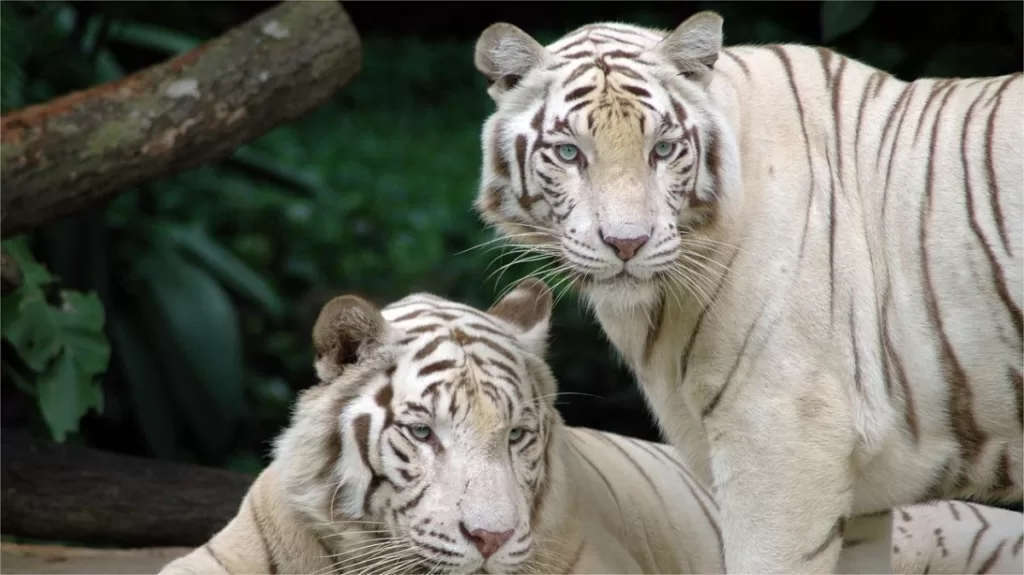贵州森林野生动物园 - 门票、开放时间、位置和亮点


Guizhou Forest Wildlife Zoo (贵州森林野生动物园), spanning 5800 acres, is situated in the picturesque town of Zhazuo, on the northern outskirts of Guiyang, surrounded by lush forests and beautiful landscapes. The zoo encompasses both enclosed and open areas, allowing visitors to observe a diverse array of wildlife, including Northeast Tigers, South China Tigers, crocodiles, giant lizards, giant pandas, red pandas, chimpanzees, white tigers, and other rare species.
The zoo showcases a variety of karst landscapes, such as gentle slopes, mountain hollows, wide valleys, peaks, stone forests, and caves. It is divided into distinct areas, including zones for rare animals, large free-roaming animals, bird exhibits, and an educational science center. Visitors not only have the opportunity to witness a wide range of animals but also to enjoy captivating performances featuring sea lions and predatory animals.
目录
基本信息
| 预计游览时间 | 2 - 3 小时 |
| 票价 | 120 人民币 |
| 开放时间 | 9.00 - 17.30;最后入场时间:17.00 |
| 电话号码 | 0086-0851-82359088 0086-0851-82359168 0086-0851-2359088 |
地点和交通
Guizhou Forest Wildlife Zoo is strategically situated within the expansive Zhazuo Forest Farm, a mere 35 kilometers away from Guiyang, the capital city of Guizhou Province中国。
There are two convenient ways to reach Guizhou Forest Wildlife Zoo:
- From Jinyang Bus Station (金阳客运站): Visitors can take a bus from Jinyang Bus Station to Guizhou Forest Wildlife Zoo. The journey takes approximately half an hour, providing a comfortable and efficient transportation option.
- Special Shuttle from Qianling Park (黔灵公园): Another convenient option is to take a special shuttle bus from Qianling Park to Guizhou Forest Wildlife Zoo. The shuttle schedule includes departures at 9:00 AM and 11:00 AM. This service provides a dedicated and direct route from Qianling Park to the wildlife zoo, ensuring a seamless and enjoyable journey for visitors.
Rare Animals in Guizhou Forest Wildlife Zoo
Guizhou Forest Wildlife Zoo boasts a diverse collection of rare and endangered animals, contributing to both conservation efforts and educational experiences. Among its notable inhabitants is the White-cheeked Gibbon, a species of long-armed gibbon found in tropical forests in China’s Yunnan, Vietnam, and Laos. Recognizable by distinct white patches on their cheeks, these gibbons are critically endangered and enjoy the highest level of protection in China.
"(《世界人权宣言》) Western Hoolock Gibbon, also known as the White-browed Gibbon, is another captivating primate at the zoo. Second in size only to the siamang, adult White-browed Gibbons can reach a length of 90 centimeters and weigh between 6 to 9 kilograms. Males exhibit black fur with white eyebrows, while females have gray-brown fur with darker chest and neck colors.
"(《世界人权宣言》) Golden Snub-nosed Monkey, belonging to the langur subfamily, is a fascinating addition to the zoo. The Sichuan snub-nosed monkey, discovered in China, is often referred to as the “Golden Monkey” due to being the first species of snub-nosed monkey discovered worldwide.
"(《世界人权宣言》) Bengal White Tiger, a variant of the Bengal Tiger, showcases a unique coloration resulting from a genetic mutation. With white fur and black stripes, these tigers were first discovered in India in 1951. The world’s existing population of white tigers is descended from the first captive individual named “Mohini.”
"(《世界人权宣言》) 大熊猫, an iconic symbol of China, has roamed the earth for at least 8 million years, earning the titles of “living fossil” and “national treasure.” The zoo is home to twin sisters, “Heqi” and “Hemei,” contributing to global efforts to conserve this endangered species. With fewer than 1,600 wild pandas remaining, they hold the highest level of protection in China.
Also known as the Red Panda or Firefox, the Lesser Panda is a small mammal native to the eastern Himalayas and southwestern China. Revered as a living fossil due to its unique evolutionary lineage, the Red Panda is a charming addition to the zoo’s collection.
"(《世界人权宣言》) Mandrill, the world’s largest monkey, belongs to the baboon family. With olive-colored fur and vivid facial colors in males, mandrills can weigh up to 30 kilograms, while females are approximately half that size. In captivity, they can live up to 25 years.
Baboons, part of the monkey family, come in various species and are distributed throughout Africa. Known for their fierce demeanor, they are omnivores and can confront lions when necessary.
"(《世界人权宣言》) White Lion, also known as the “White African Lion,” is a variant of the Kruger Lion found in Africa. First discovered in South Africa in the mid-20th century, their population worldwide is currently limited to fewer than 100 individuals. Unlike animals with albinism, White Lions typically have light blue eyes.
"(《世界人权宣言》) Leopard, a member of the big cat family, is widespread in various countries across Africa and Asia. With adaptability to different environments, they exhibit varying fur colors such as light yellow, golden, or yellow-brown, earning them the name “Golden Leopard” or “Clouded Leopard.”
"(《世界人权宣言》) Common Crane, also known as the Eurasian Crane, is a widespread and commonly seen crane species. Mainly found in the Palearctic region, it is characterized by its elegance and is often associated with longevity.
"(《世界人权宣言》) South China Tiger, also known as the Xiamen Tiger or Chinese Tiger, is a subspecies endemic to southern China. Once prevalent in the region, the wild population of South China Tigers has drastically declined, making their existence in the wild extremely rare.
"(《世界人权宣言》) Grey Crowned Crane, also known as the East African Crowned Crane, is a small crane species inhabiting African marshes and tropical grasslands. Distinguished by its fluffy plumage, straight trachea, intricate crown feathers, and beautiful facial patterns, it is also referred to as the “Crowned Crane.”
"(《世界人权宣言》) Sarus Crane, also called the Demoiselle Crane, primarily inhabits central Asia. These cranes migrate southward from the China-Mongolia border region each year, featuring predominantly gray-black feathers with red eyes. With an adult height of about 80 centimeters, the Sarus Crane is the smallest among over ten crane species worldwide.
Vlog about Guizhou Forest Wildlife Zoo
贵阳郊区的其他景点

南江大峡谷

后儿天坑

贵阳森林公园

高坡苗族乡

西峰温泉

云顶草场

红枫湖(红枫湖)

Guiyang Lover Valley